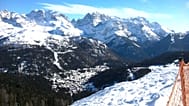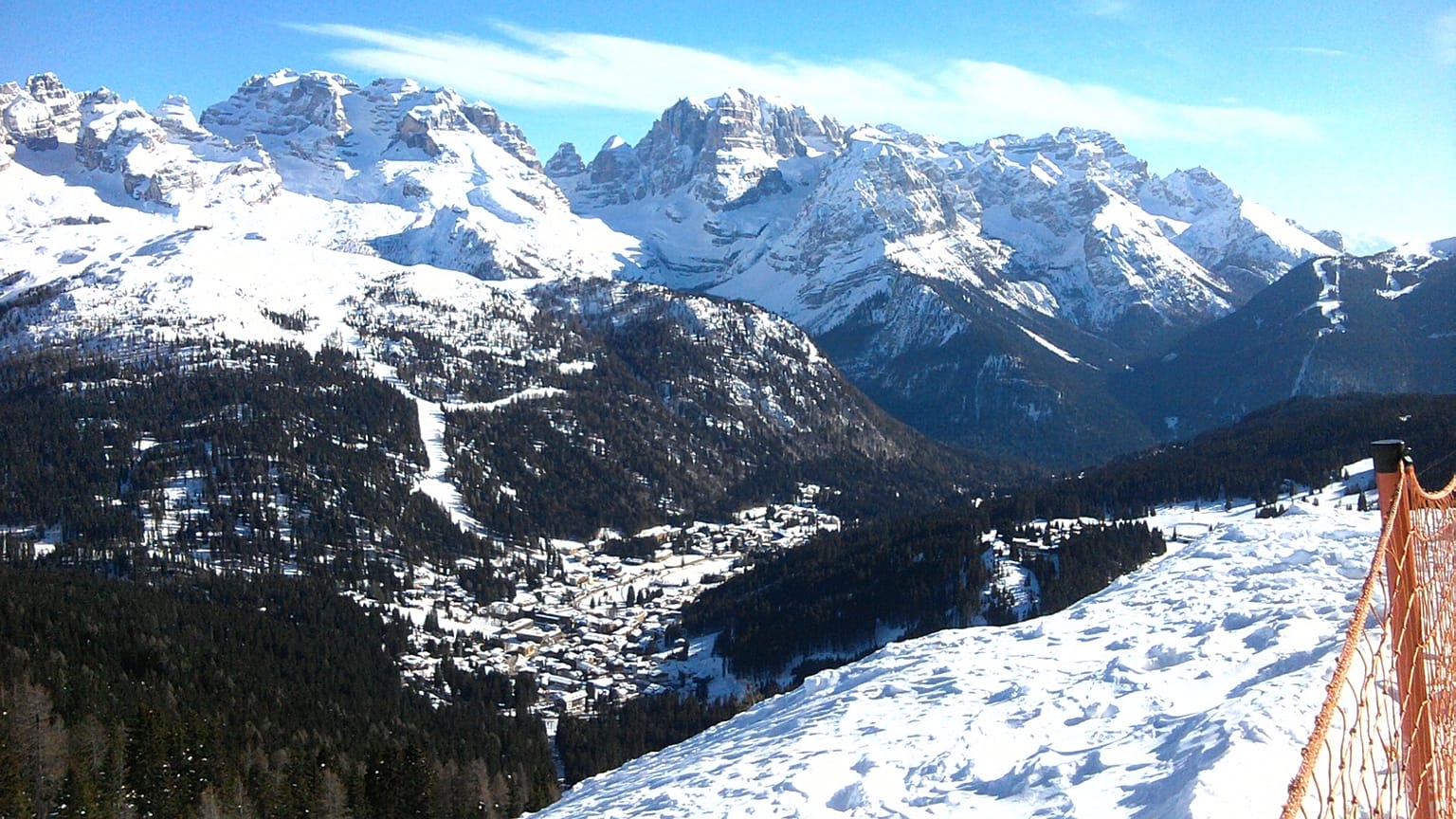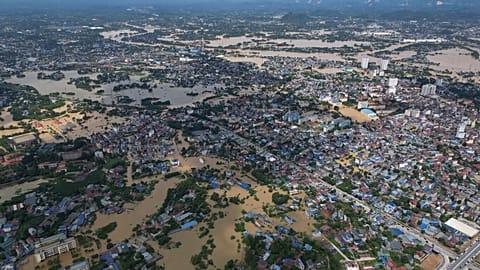Following a summer of severe overcrowding, one Italian resort is curbing the number of skiers on the slopes during peak seasons.
 ADVERTISEMENT
ADVERTISEMENT
An acclaimed ski resort set in the Italian Dolomites will become the country’s first to cap the number of visitors it receives this winter.
Madonna di Campiglio has announced it will curb the presence of skiers on the slopes by limiting daily passes purchased online to just 15,000.
While this marks a significant decrease from the 23,000 admissions that were sold in a single day last year, there are several exceptions to the rule.
The move comes after the mountain range struggled with overcrowding this summer as travellers looked for cooler climes amid soaring temperatures.
Italy’s capped ski resort: How will it work?
Madonna Campiglio says limiting the number of daily pass holders to an “ideal number” will help improve the skiing experience as well as customer safety.
The cap will come into place from 28 December, 2025, to 5 January, 2026, as well as during Italy’s annual Carnival (15-22 February, 2026).
Madonna di Campiglio is also developing new “smart skipasses” to allow skiers to avoid crowded zones during the peak season by “dynamically distributing skier traffic across the 150km of slopes”.
However, the visitor cap will only apply to daily SkiArea passes sold online, meaning those with seasonal passholders, pay-per-use cards, multi-day passes, and passes within Pinzolo and Folgarida Marilleva remain unaffected.
Non-skiers will also be allowed to freely access pedestrian-enabled lifts.
‘A more holistic approach’
Catherine Warrilow, a tourism brand strategy expert at The Plot, tells Euronews Travel that overtourism can have a negative impact on guest experience, as well as on local residents and the environment.
“Limiting visitors per day to the slopes and lifts may reduce wider impacts but in my experience, it needs a far more holistic approach, coordinated with the local tourist association, businesses and residents,” she adds.
Warrilow argues that managing the flow of visitors to a region rather than just one resort or bottleneck would result in “wider accessibility and sustainability” - describing the resort’s move as a “visitor management adjustment” rather than a commitment to overtourism.
“I would speculate that this is designed more to even out visitor numbers through the ski season and avert the risk of someone being seriously hurt, as opposed to lessening the impact of tourism on the resort and local area,” she says.
Overtourism in the Dolomites
Madonna di Campiglio doesn’t explicitly mention overtourism in its announcement, arguing it wants to “prioritise quality over quantity”.
However, in recent years, the region has witnessed a significant surge in visitors - especially in nearby South Tyrol.
Last year, the province garnered a record-breaking 37.1 million overnight stays, marking a 2.6 per cent increase compared to 2023.
Many travellers flocked to a famous hiking trail on Seceda mountain - famed for its spiky Odle Peaks - after videos of the summit went viral on social media.
In a single day in August, some 8,000 people reportedly walked the path.
After witnessing mounds of rubbish and poor visitor behaviour, local landowners decided to set up a turnstile with a toll along the path, charging €5 for anyone wanting to hike along the route.
Residents and children were excluded from paying.
The turnstile was quickly deactivated by the Puez-Odle Nature Park authorities, but was reinstated days after - as landowners say they received no help from political representatives, associations, or organisations about the issue.
The influx coincided with Italy’s scorching summer, which saw droves of tourists ditch the beach for a much cooler walk in Alpine areas like the Dolomites.
"We're in the busiest tourist season of the year, but there aren't any people: we're here counting sheep," one beach establishment owner from Abruzzo told Italian media back in August.
With as much as a 25 per cent drop in visitors along some of the country’s coastlines, Italy’s already-saturated mountains received a boost in numbers it perhaps wasn’t prepared for, proving that overtourism in the destination threatens locals all year round.

















